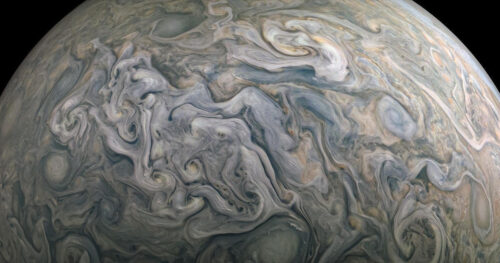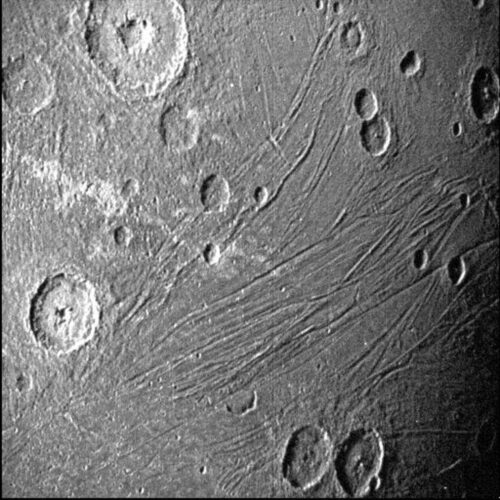
NASA’s Juno spacecraft recently conducted a close flyby of Ganymede, the largest moon in our solar system, providing scientists with the first detailed images of this celestial wonder since the Galileo orbiter’s visit in 2000.
This historic encounter has enabled researchers to gather valuable data and capture razor-sharp images, shedding new light on Ganymede’s composition, structure, and surface features.
This article explores the significance of Juno’s mission, the key findings from the flyby, and the implications for our understanding of the solar system’s largest moon.
On Monday, NASA’s Juno probe streaked past Ganymede, marking the closest approach to this massive moon in over two decades.
The spacecraft captured high-resolution images and collected scientific data during its flyby, giving scientists an unprecedented opportunity to study Ganymede in detail.
Ganymede’s ice shell, with its light and dark regions, suggests variations in the composition and structure of the moon’s icy surface.
Juno’s in-depth investigation will provide crucial insights into the formation of the ice shell and the ongoing processes that shape Ganymede over time.
These findings will contribute to a better understanding of the moon’s geology and the possibility of a sub-surface sea beneath its icy crust.
Launched in 2011, Juno was designed to study Jupiter’s deep interior, atmosphere, magnetic field, and aurorae.

The spacecraft successfully entered orbit around Jupiter in 2016 and has been on an extended mission since.
With the recent approval of two mission extensions, Juno will continue its exploration of the gas giant and its moons until mid-2025.
Juno’s primary mission has provided remarkable insights into Jupiter’s polar storms, the planet’s core, and its overall behavior.
By closely approaching Jupiter’s north polar regions, Juno has captured unprecedented images and collected vast amounts of data.
These observations have led to groundbreaking discoveries and enhanced our understanding of the gas giant.
Juno’s carefully planned trajectory includes multiple flybys of Jupiter’s moons.
The recent encounter with Ganymede utilized the moon’s gravity to adjust Juno’s orbit, leading to future close flybys of Europa and Io.

These upcoming flybys will enable scientists to study these intriguing moons in unprecedented detail, comparing their current states with the data collected by previous missions like Galileo and Voyager.
Juno’s Junocam imager, primarily designed for wide-angle observations and public outreach, has captured stunning hemispheric views of Jupiter’s turbulent atmosphere.
Although Junocam is not equipped for narrow-angle observations, the close proximity to Ganymede has allowed for higher-resolution images.
These images, combined with different filters, will provide color views and reveal surface features as small as six-tenths of a mile across.
NASA’s Juno probe has provided a new glimpse into the intriguing moon Ganymede, offering scientists the opportunity to study this celestial body like never before.
By capturing razor-sharp images and collecting valuable data during its close flyby, Juno is contributing to our understanding of Ganymede’s composition, structure, and surface features.

This mission highlights the importance of space exploration and the role it plays in unraveling the mysteries of our solar system
As Juno continues its journey, we can expect even more awe-inspiring discoveries that will reshape our understanding of Jupiter and its captivating moons.






